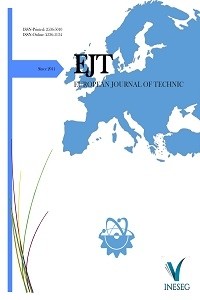EEG Channel Selection using Differential Evolution Algorithm and Particle Swarm Optimization for Classification of Odorant-Stimulated Records
EEG Channel Selection using Differential Evolution Algorithm and Particle Swarm Optimization for Classification of Odorant-Stimulated Records
DEA, EEG Channel Selection, evolutionary computing PSO, swarm intelligence,
___
- Park, S.M., Kim, J.Y., Sim, K.B. (2018). EEG electrode selection method based on BPSO with channel impact factor for acquisition of significant brain signal. Optik (Stuttg), 155, 89–96. https://doi.org/10.1016/j.ijleo.2017.10.085.
- Alotaiby, T., El-Samie, F.E.A., Alshebeili, S.A., and Ahmad, I. (2015). A review of channel selection algorithms for EEG signal processing. EURASIP J. Adv. Signal Process, 66. https://doi.org/10.1186/s13634-015-0251-9.
- Das, S., Abraham, A., and Konar, A. (2008). Particle swarm optimization and differential evolution algorithms: Technical analysis, applications and hybridization perspectives. Stud. Comput. Intell, 116, 1–38. https://doi.org/10.1007/978-3-540-78297-1_1.
- Bozorg-Haddad, O., Solgi, M., Loaiciga, H. A., Meta‐Heuristic and Evolutionary Algorithms for Engineering Optimization, First, John Wiley & Sons, Inc., New JErsey, USA, 2017. www.wiley.com.
- Satapathy, S.K., Dehuri, S., Jagadev, A.K. (2017). EEG signal classification using PSO trained RBF neural network for epilepsy identification. Informatics Med. Unlocked, 6, 1–11. https://doi.org/10.1016/j.imu.2016.12.001.
- Khushaba, R.N., Al-Ani, A., Al-Jumaily, A. (2011). Feature subset selection using differential evolution and a statistical repair mechanism. Expert Syst. Appl., 38, 11515–11526. https://doi.org/10.1016/j.eswa.2011.03.028.
- Kroupi, E., Yazdani, A., Vesin, J.-M., and Ebrahimi, T. (2014). EEG Correlates of Pleasant and Unpleasant Odor Perception, ACM Trans. Multimed. Comput. Commun. Appl., 11, 1–17. https://doi.org/10.1145/2637287.
- Acharya, U. R., Fujita, H., Sudarshan, V. K., Bhat, S., and Koh, J. E. W. (2015). Application of entropies for automated diagnosis of epilepsy using EEG signals: A review. Knowledge-Based Syst., 88, 85–96.
- O. Aydemir and T. Kayikcioglu, “Comparing common machine learning classifiers in low-dimensional feature vectors for brain computer interface applications,” Int. J. Innov. Comput. Inf. Control, vol. 9, no. 3, pp. 1145–1157, 2013.
- Gonzalez, A, Nambu, I., Hokari, H., Wada, Y. (2014). EEG Channel Selection Using Particle Swarm Optimization for the Classification of Auditory Event-Related Potentials. Sci. World J., 2014, 350270. https://doi.org/10.1155/2014/350270.
- ISSN: 2536-5010
- Yayın Aralığı: Yılda 2 Sayı
- Başlangıç: 2011
- Yayıncı: Hibetullah KILIÇ
Mesut ŞEKER, Mehmet Siraç ÖZERDEM
While Covid-19 Outbreak Affects Economies and Societies; Exploring The Energy Demand in Turkey
A New Joining Algorithm for Multi-hop Non-mobile Wireless Sensor Networks
Musa ÇIBUK, Davut ARI, Fikri AĞGÜN
Investigation of Power Consumption Effect of Various Memristor Emulators on a Logic Gate
Sevgi GÜRSUL, Serdar Ethem HAMAMCI
Measurement of the Number of Photoelectrons per MeV for Neutron Detectors
Emre İREN, Ferhat ÖZOK, Mustafa Nizametin ERDURAN
Design and Implementation of EOG Signal Based Wireless System to Control Smart Devices
Nazmi EKREN, Abdalrahman SKHETA
Medium and Large Vector-Based SVPWM Technique for Five-Phase Two-Level Inverter
Demand-Side Energy Management in Smart Buildings: A Case Study
